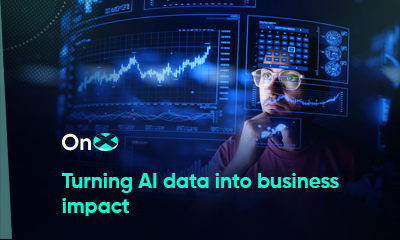
Of the many elements involved during mergers, acquisitions (M&As), and divestitures, technology is often a deal breaker. Fortunately, cloud networking provides a reliable solution to many of the challenges of M&As.
A majority of M&As fail
Research from McKinsey shows that 10% of mergers are called off annually. Additionally, many studies demonstrate that between 70% and 90% of mergers fail over the long term. It’s easy to see why. Executives, saddled with merging company cultures, financials, and philosophies, also face the challenge of blending two technology stacks. The Harvard Business Review found that 71% of surveyed executives said technology integration was a major determining factor for successful mergers.
Despite the odds, many enterprises risk M&As to boost efficiency, acquire new resources, and increase profitability. An updated cloud technology stack can be a draw for potential buyers. In contrast, legacy architecture can quickly sour a deal. And security is also a factor. Mid-acquisition, the purchaser may discover an undisclosed vulnerability or interoperable systems. And divestments aren’t free from worry on this topic either. Keeping sensitive data is always a concern, especially when shedding a company or division.
Cloud networking is an efficient method of solving these core obstacles. Integration is simplified when both organizations operate in the Cloud. Storage, communications, collaboration, and security can seamlessly weave together.
This post explores how cloud technology factors into M&As. (Note that we will use the term M&As to represent all three categories of business restructuring–mergers, acquisitions, and divestitures.)
Timing the migration to cloud networking
- Before restructuring – An optimized cloud environment is an attractive asset for buyers seeking to improve their technology capacity.
- During restructuring – Every system comes under scrutiny during restructuring. This moment of analysis is perfect for gaining visibility and strategizing system configurations. It’s also an excellent time to tackle big IT projects like application modernization or cloud migration.
- After the merger – In a perfect world, both organizations would have transitioned to cloud networking before or mid-restructuring, but a cloud migration can happen anytime. In addition, cloud-based solutions can assist with a smooth decoupling of systems necessary during a divestiture.
How to stack the deck in your favor during M&As
The Cloud is vital to surmounting the technological challenges that prevent successful M&A. Some of the key benefits of cloud computing related to mergers, acquisitions, and divestitures include the following.
Move from CapEx to OpEx
Increasingly, vital systems, infrastructure, hardware, and even code “live” in cloud environments. With cloud computing, IT teams don’t have to dedicate large portions of their annual budget to hardware and infrastructure upgrades (which are handled by the cloud service provider). The IT budget transitions to primarily monthly operating expenses based on subscriptions or single-use consumption fees.
Cutting-edge technology
Cloud providers constantly implement the latest and most significant advances in AI, threat detection and security, and collaboration tools to improve CX to stay competitive. As a result, customers gain agility and speed.
Built for hybrid environments
Before cloud networking, a merger might mean physically connecting infrastructure or moving hardware between sites. The Cloud simplifies the process of unifying each company’s tech stack and speeds up the overall timeline of M&As. Employees can work from anywhere in the world while staying connected with cloud-based communications solutions like unified communications.
Enhanced security
The cloud is faster and inherently more secure than legacy environments. Security experts now have greater visibility into emerging threats and have access to advanced tools that stamp out those threats. Additionally, cloud security is a valuable resource in securing digital supply chains.
Scalability
Previously, tweaking a workflow by adding a new application or process meant physically installing that app on dozens, hundreds, or thousands of machines. Today, IT teams install or patch applications remotely across the environment, with a cloud computing environment, security, patching, and vulnerability management tools scale as needed.
Faster integration
A critical advantage of cloud networking in M&As is that it speeds up the integration of workflows. Crucial systems like e-mail, calendars, directories, and contact centers are rapidly integrated, especially if both parties are already cloud-ready.
Unified communication and collaboration. Collaboration and communication tools like Microsoft Teams Voice and Webex Calling can be unified with a traditional phone system to build more efficient and secure communication systems throughout all locations.
Also read: Five trusted paths to application modernization and their benefits
Obstacles to cloud migration
Business restructuring events have a lot of moving parts. Overworked IT professionals in newly formed or restructured teams face overwhelming labor in M&A scenarios. They may need to modernize applications, perform vulnerability testing, or debug newly integrated workflows. Those are just a few tasks they must accomplish in a contracted timeframe and with a limited budget.
Supply chain security
Every vendor links the newly combined (or divested) supply chain, and each link is a potential weak point. One overlooked vulnerability could be responsible for a ransomware attack that spreads throughout the new supply chain.
Preventing data exposure consists of two primary strategies:
- Proactive – Finding and patching security vulnerabilities before they cause issues.
- Reactive – Implementing robust backup systems and disaster recovery solutions to rapidly restore services if a breach or natural disaster causes an outage.
A proactive approach to security means deploying next-gen security tools to seek out emerging threats and prevent them from causing damage. In addition, it means implementing security hygiene protocols at the organizational level, like password best practices, and developing a patch management program. Lastly, security frameworks such as zero trust, when deployed with security-integrated networking such as SD-WAN or SASE and encrypted storage solutions, provide a strong defense posture for your organization and the organizations tied to you via supply chains and M&A.
In contrast, a reactive approach guarantees that your mission-critical systems can be restored ASAP after a breach or natural disaster.
Learn more: Seven core strategies for cloud disaster recovery solutions
Cloud migration and optimization during mergers and acquisition
Cutting costs during M&As is top of mind for organizations going through the process. However, companies that attempt to navigate the rocky terrain of merging technology stacks without an experienced guide will soon be overwhelmed. M&As are risky endeavors, to begin with, so you need every advantage at your disposal that can help your business stack the deck in its favor.
The OnX team has over 30 years of expertise in the data center space and seamlessly transitioned to cloud environment management. OnX has guided hundreds of organizations through cloud migrations, application modernization, and cloud optimization. Our experts provide customized cloud networking, from security to application modernization to communications.















